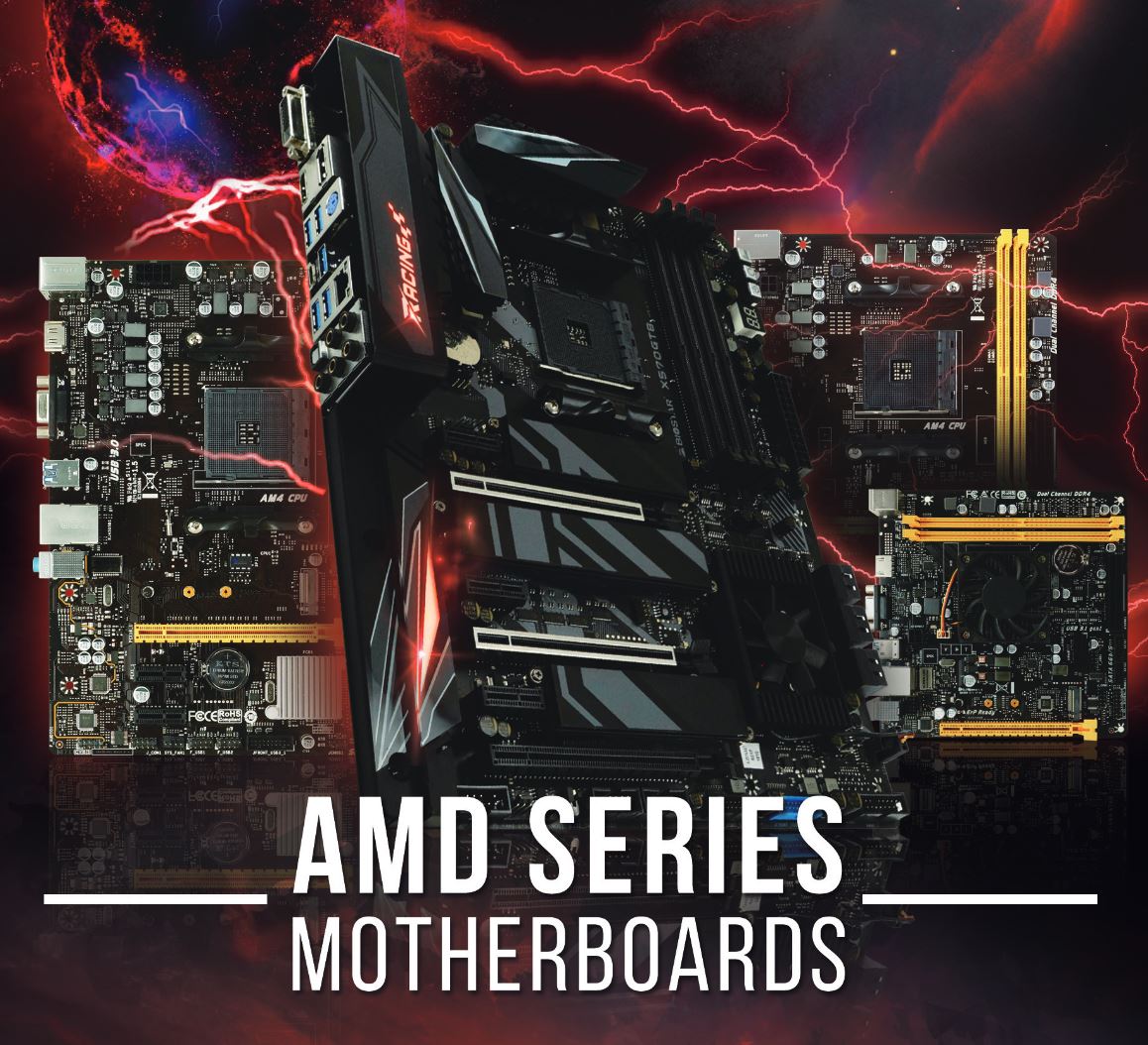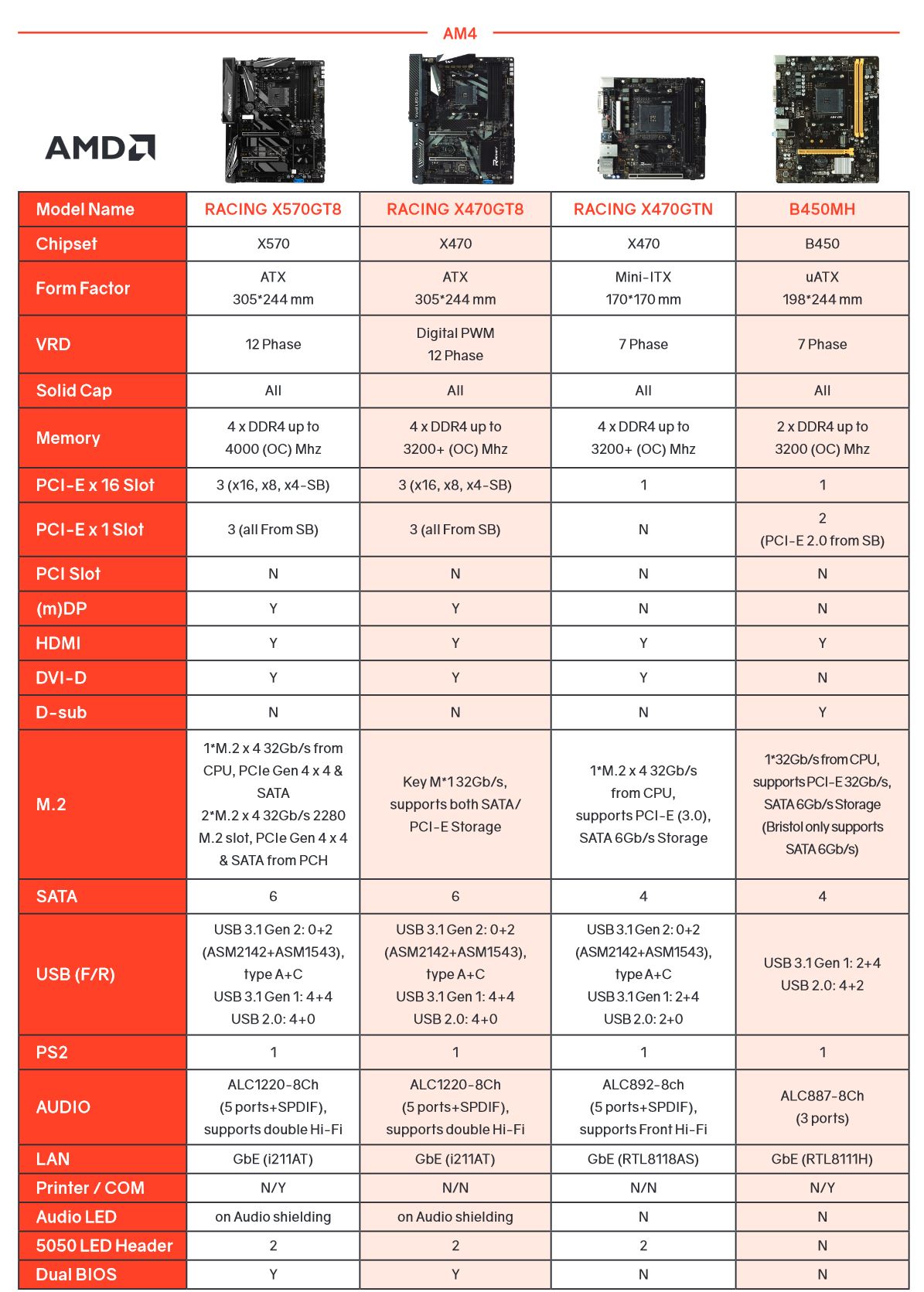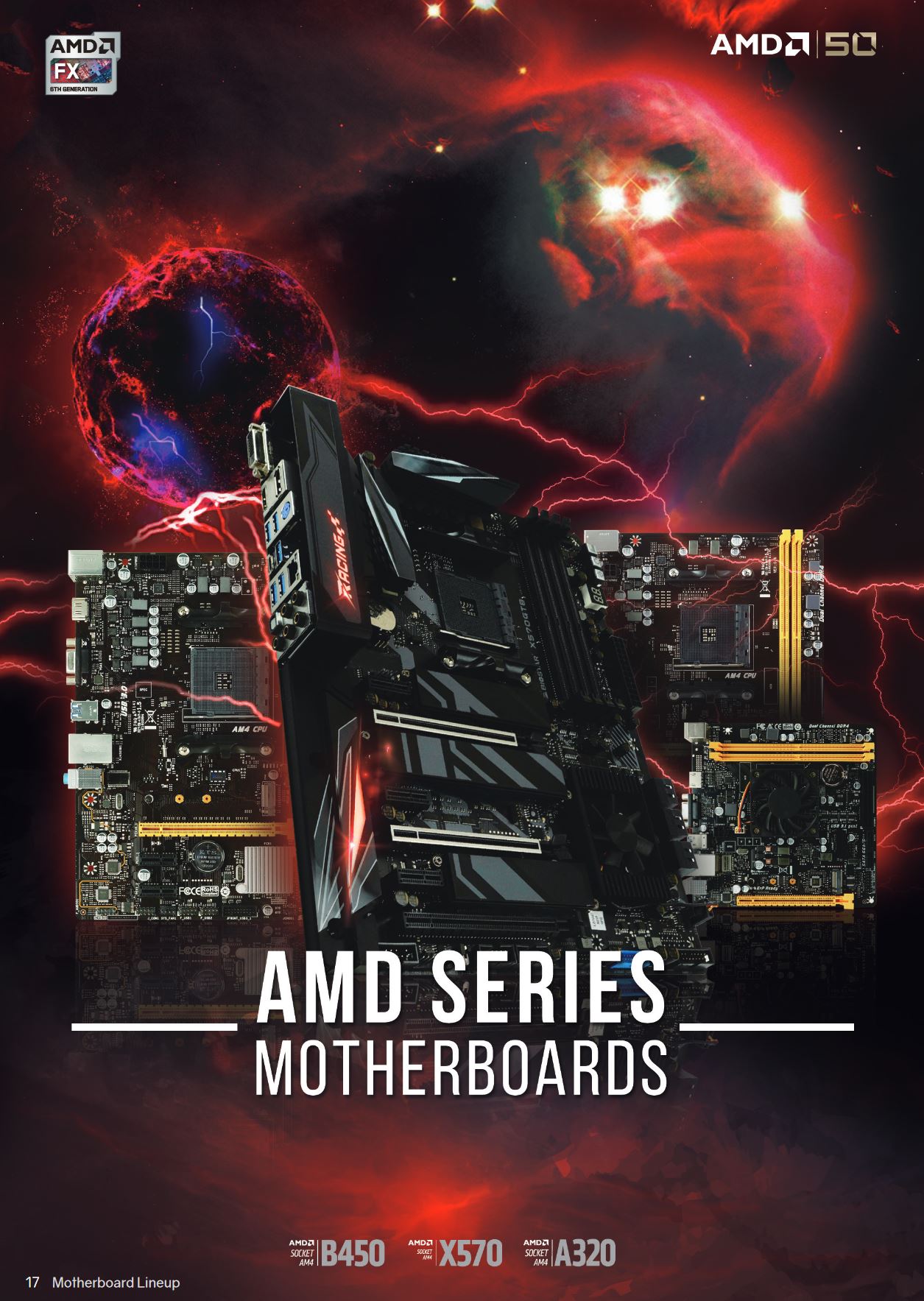X570 Chipset Specs for AMD Ryzen 3000 Series Revealed by Biostar Racing GT8 Motherboard Listing
AMD is widely expected to release its X570 chipset, the home of its hotly-anticipated Ryzen 3000 Series processors, at Computex 2019, but Biostar jumped the gun and made what (presumably) appears to be an accidental announcement of its own.
VideoCardz spotted that Biostar posted a file (PDF) to its website with the specs of its soon-to-be-released flagship Racing X570GT8 motherboards, giving us a view of what we can expect from AMD's new flagship chipset.
The Socket AM4 motherboard comes with a black aesthetic with silver trim and sucks power through a 24-pin ATX and two 8+4-pin EPS connectors that feed a 12-phase power delivery subsystem. The power delivery is cooled by two beefy finned heatsinks.
The board comes equipped with three PCIe slots (x16, x8, x4) and one PCIe x1 slot that, although not implicitly stated in the spec sheet, should all run at PCIe 4.0 signaling rates. That marks the first arrival of the new PCIe specification on the mainstream desktop.
The motherboard supports four DDR4 sticks running at up to 4000 MHz after overclocking, which is an encouraging sign because first-gen Ryzen motherboards came with much lower memory thresholds that were later raised to accommodate improved memory capability. We've heard recent reports that some new AM4 motherboards can accommodate BIOS settings that span up to 5000 MHz, but you should disregard reports that claim these are the stock memory clocks for Ryzen 3000 processors.
The chipset is cooled via a rather large fan that could confirm our sources' reports that the PCIe 4.0 connections consume quite a bit more power than AMD's previous-generation chipsets, pushing the chipset power envelope up from ~8W to ~15W.
The motherboard also comes equipped with three M.2 slots for storage devices, with one marked as a PCIe 4.0 x4 connection capable of 32 Gb/s of throughput, while two SATA M.2 slots run at the same speed. These slots all come with full-length heatsinks. Biostar's listing indicates all three of the M.2 sockets hang off the platform controller hub (PCH).
Get Tom's Hardware's best news and in-depth reviews, straight to your inbox.
Other accommodations include USB 3.1 Gen 2, USB 3.1 Gen 1, and four USB 2.0 ports. We expect the listing to be removed swiftly, but for now, we have a good idea of what the X570 chipset will bring when AMD unveils it during Computex 2019.

Paul Alcorn is the Editor-in-Chief for Tom's Hardware US. He also writes news and reviews on CPUs, storage, and enterprise hardware.
-
drivinfast247 Typo in first paragraph. The release date has the wrong year. Should be 2019.Reply
Chipset fans making a comeback in '19! -
CountMike Somehow I can't imagine Biostar as a leader but that MB looks awesome with that VRM.Reply -
feelinfroggy777 It needs a fan on the chipset, not a good start for PCIe 4.0, especially if the extra bandwidth cant really be used.Reply -
Gillerer The news piece saysReply
The motherboard also comes equipped with three M.2 slots for storage devices, with one marked as a PCIe 4.0 x4 connection capable of 32 Gb/s of throughput, while two SATA M.2 slots run at the same speed. Biostar's listing indicates all three of the M.2 sockets hang off the platform controller hub (PCH).
However, the specs listing clearly indicates that:
the first M.2 comes directly from the CPU, and the other two from the PCH; and
all M.2 slots are capable of either PCIe 4 x4 or SATA.*
Would be interesting to know, whether using a M.2 SATA drive will disable any of the dedicated SATA connections (as is customary on Intel platforms). -
AMv8(1day) ReplyGillerer said:The news piece says
However, the specs listing clearly indicates that:
the first M.2 comes directly from the CPU, and the other two from the PCH; and
all M.2 slots are capable of either PCIe 4 x4 or SATA.*
Would be interesting to know, whether using a M.2 SATA drive will disable any of the dedicated SATA connections (as is customary on Intel platforms).
Agree with the above apparent discrepancies, as well as the quoted "PCIe 4.0 x4 32 Gb/s speed. That's PCIe 3.0 x4 speed. 4.0 x4 is double that (64Gb/s or 8GB/s). -
supremelaw ReplyAMv8(1day) said:That's PCIe 3.0 x4 speed. 4.0 x4 is double that (64Gb/s or 8GB/s).
I noticed that too: PCIe 4.0 x4 connection capable of 32 Gb/s
The PCIe 4.0 clock rate is 16 Gb/s, exactly double the PCIe 3.0 8G clock rate.
The exact throughput of a single PCIe 4.0 lane is:
16 GHz / 8.125 bits per byte x 4 lanes = 7,876.92 MB/second
Compare that to the PCIe 3.0 throughput of a single lane:
8 GHz / 8.125 bits per byte x 4 lanes = 3,938.46 MB/second (exactly half)
the PCIe 3.0 "jumbo frame" stores 16 bytes + one start bit and one stop bit,
i.e. 130 bits / 16 bytes = 8.125 bits per byte -
alextheblue Those suggested memory overclocks are promising. Seems like Zen 2's memory controller will be capable of hitting much higher speeds, if the previously-conservative numbers by the manufacturer have been boosted that much. With that being said, we'll have to see how well Zen 2 and the new revision of IF scale. Current Zen starts getting diminishing returns around 3000. If it scales well to at least 3600 I would be happy, since 3600 kits are starting to get pretty affordable now.Reply
Storage devices will be PCIe 4.0 compatible soon. In the not so distant future, high end M.2 devices won't have a problem taking advantage of the extra bandwidth, seeing as how M.2 is limited to 4 lanes.feelinfroggy777 said:It needs a fan on the chipset, not a good start for PCIe 4.0, especially if the extra bandwidth cant really be used.
Also, it's future proofing to some extent. If you buy a 3.0 platform today, you're stuck at 3.0 speeds. If you buy a 4.0 platform, both 4.0 and upcoming 5.0 devices will operate at 4.0 speeds. There's no good reason for AMD to skip PCIe 4.0 right now, it benefits their server business almost immediately, and will aid consumer platforms to some degree in the near future. -
ElectrO_90 Reply
"the bandwidth of the PCIe 4.0 technology (Up to 64 Gbytes/s of total bandwidth for a PCIe 4.0 x16). "supremelaw said:I noticed that too: PCIe 4.0 x4 connection capable of 32 Gb/s
The PCIe 4.0 clock rate is 16 Gb/s, exactly double the PCIe 3.0 8G clock rate.
The exact throughput of a single PCIe 4.0 lane is:
16 GHz / 8.125 bits per byte x 4 lanes = 7,876.92 MB/second
Compare that to the PCIe 3.0 throughput of a single lane:
8 GHz / 8.125 bits per byte x 4 lanes = 3,938.46 MB/second (exactly half)
the PCIe 3.0 "jumbo frame" stores 16 bytes + one start bit and one stop bit,
i.e. 130 bits / 16 bytes = 8.125 bits per byte
https://www.plda.com/blog/category/technical-article/market-ready-conquer-pcie-40-challengesSo it is correct as its 16 per lane and 16x 4 = 64 TOTAL = 32 up and 32 down - so 32 can be read or written - but it all depends on how you look at it.
you can say it has a transfer of 32 or 64 - depends if you want to name max one way or max both ways. -
TJ Hooker Reply
PCIe speeds are stated as max speed in each direction, due to it being a full duplex link. PCIe 4.0 x4 is capable of 64 Gbps in each direction. Your own link says as much:ElectrO_90 said:"the bandwidth of the PCIe 4.0 technology (Up to 64 Gbytes/s of total bandwidth for a PCIe 4.0 x16). "
https://www.plda.com/blog/category/technical-article/market-ready-conquer-pcie-40-challengesSo it is correct as its 16 per lane and 16x 4 = 64 TOTAL = 32 up and 32 down - so 32 can be read or written - but it all depends on how you look at it.
you can say it has a transfer of 32 or 64 - depends if you want to name max one way or max both ways.
"In term of performance, with PCIe 4.0, throughput per lane is 16 GT/s. The link is full duplex, which means the data can be sent and received simultaneously à Total Bandwidth: 32GT/s." -
supremelaw ReplyPCIe 4.0 x4 is capable of 64 Gbps in each direction.
Correct! The raw data stream of O's and 1's (binary digits)
transmits 16 Billion such binary digits per second
over a single serial channel.
Just multiply by the number of serial channels
to calculate maximum feasible throughput.
Where some people stumble is the conversion
to "bytes per second". This is easily done by
understanding the "jumbo frame" layout aka 128b/130b.
The latter refers to 16 x 8-bit bytes + 1 start bit + 1 stop bit
for a total of 130 binary digits per jumbo frame:
16 x 8 + 1 + 1 = 128 + 2 = 130 bits
Thus, the exact divisor is 130 bits / 16 bytes = 8.125 bits per useful byte.
And, 16 Gbps / 8.125 = 1,969.23 Megabytes of useful data per x1 PCIe 4.0 lane.
(The latest USB standard uses a slightly different jumbo frame: 128b/132b .)
Hope this helps.


